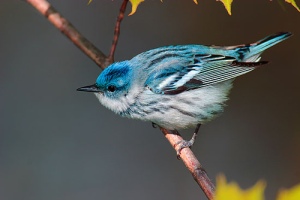Thursday, Jun 8, 2017
By Michelle Ferrell, MNA Intern
Bust out your binoculars and bring your field guides! Spring is one of the best times to observe the abundance of birds to be found in MNA sanctuaries, including vast raptor migrations in the Upper Peninsula and the nesting habitats of hummingbirds, woodpeckers, warblers and finches throughout the rest of the state. Below is a list of several such sanctuaries noted to be particularly good destinations for spring birding starting in the Keweenaw and moving down to the Indiana/Ohio border.
Many more opportunities are to be found, however, so we encourage you to check out our list of other MNA sanctuaries specially selected for their seasonal offerings to those looking to enjoy the great outdoors.
Keweenaw Peninsula - U.P.
James H. Klipfel Memorial Nature Sanctuary
Keweenaw County
The drive along the mountain ridge top is often proclaimed to have the most outstanding scenery and provide the most dramatic in Michigan. A short 0.75 mile loop trail offers a breathtaking view of Lake Superior.
The outlook also provides an extraordinary opportunity to bird watch during their spring migration. Tens of thousands of hawks, eagles, vultures, falcons and other soaring birds funnel north onto narrowing landmasses, including the Keweenaw Peninsula.
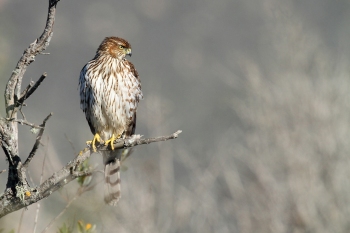
Keweenaw Shores No. 1 Nature Sanctuary
Keweenaw County
Along the shore of Lake Superior, there is a spectactular array of rocks covered with colorful lichens ranging from pink to orange, yellow and green. A natural cove along the shore is one of the few places in Michigan where it is possible to see both a sunrise and sunset without visual distraction.
In late spring, the showy white blossoms of the serviceberry, the earliest blooming shrub in the Keweenaw, greets the hiker. The trail winds over several ridges of Copper Harbor Conglomerate and traverses four different plant communities.
Many bird species, including ruby-throated hummingbirds, boreal chickadees and American redstarts build their nests in the lichens.
The rocks of the northern shore are more than 1 billion years old.
The best time to visit the sanctuary is in the spring during migration.

John J. Helstrom Nature Sanctuary
Keweenaw County
The John J. Helstrom Nature Sanctuary is located high along Brockway Mountain Drive; in fact, 3/8 mile of the scenic drive passes through the sanctuary. It is located just east of MNA's Klipfel Memorial Nature Sanctuary.
Heart-leaved arnica, and endangered Michigan species, thrives in the dry, alkaline conditions.
This overlook provides an extraordinary opportunity to watch hawks and other birds during their spring migration. The birds use thermal updrafts created by topography and rising warm air. Thousands of raptors, owls and othe birds use this method of flying.
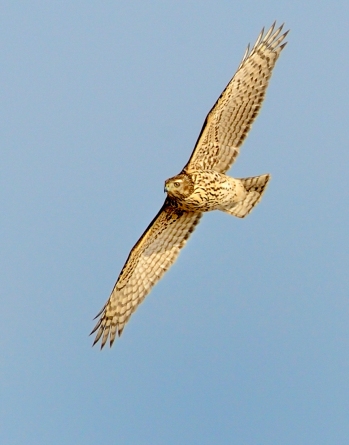
Estivant Pines Nature Sanctuary
Keweenaw County
Two loop trails bring visitors through the towering pines and forest. The 1 mile Cathedral Grove loop passes some of the largest and oldest giant white pines, growing more than 125 feet tall and dating back 300 years. The two trails intersect and can be completed as a 2.5 mile hike.
More than 85 bird species inhabit the old-growth forest, including woodpeckers, hawks and red crossbills. Despite thin soil and boreal climate, several wildflowers grow, such as asters, clintonia, baneberry and violets.
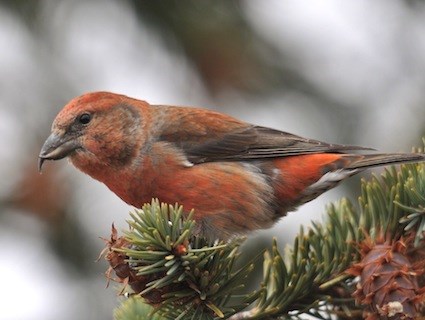
Redwyn's Dunes Nature Sanctuary
Keweenaw County
The 36.37 acre sanctuary is located on Keweenaw County's Great Sand Bay. The shoreline of Great Sand Bay receives the full force of the strong prevailing westerly winds off Lake Superior and the shoreline has sand dunes up too 100 feet in height above the shoreline.
The back inner dunes are vegetated by juniper clones as large as 15 square feet, and by wind-contorted red pines and aspen.
The sanctuary is a favorite resting spot for the migratory waterfowl in the wetlands along the back dunes. Beavers, killdeer and songbirds are also present among the varied plant life.
A one-mile trail passes interdunal ponds and leads down to the Lake Superior shoreline where feldspar pebbles are often found. In the winter, the trail can be used for cross-country skiing.
The gently rolling topography provides a pleasant hike for visitors of all ages during any time of the year.
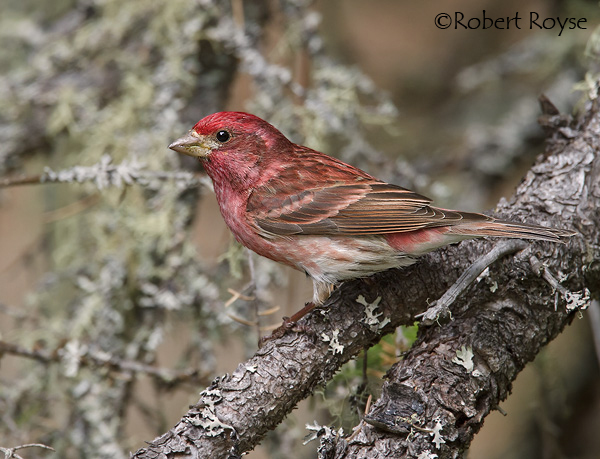
Upper Peninsula (outside of the Keweenaw)
Marquette County
Located in the north-central Upper Peninsula, the 238-acre Braastad Nature Sanctuary contains amazing diversity in landscape. Part of the sanctuary features an old bog, with other parts forested. There is even an old lakebed filled with leatherleaf.
Throughout, deer and songbirds are plentiful. You may even see an occasional black bear.
A number of orchids, trailing arbutus and gentians call this place home as well.
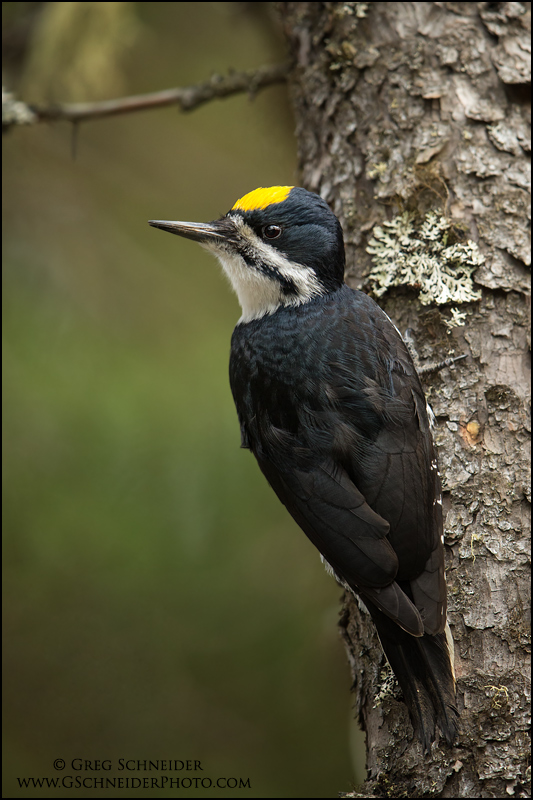
Mackinac County
The 36 acre has no trails, but is easily navigable due to its openness. The prairie seems somewhat out of place in the Upper Peninsula, and it is suspected to be a result of human activity. The dolomite bedrock and karst features scattered throughout the sanctuary contribute to the grass-dominated, open habitat. The shallow, exposed bedrock and thin soils make it difficult for hardwood forests to fully develop. The karst features found in the sanctuary today may eventually turn into caves or sinkholes after centuries because of the eroding bedrock.
Many bird species can be found year-round at Fred Dye. Visitors can see many breeding and migratory birds in the summer, as they thrive in the sanctuary's prairie habitat. Ruby-throated hummingbirds can be seen arond the wildflowers.
The diversity of plant species at Fred Dye result in different sets of wildflowers blooming through all points of the growing season. In the spring, visitors are welcomed by round-lobed hepatica and wild columbine. In summer, purple coneflower, prairie cinquefoil and toadflax are in bloom. The fall brings leathery grape fern, pale spike lobelia and fringed gentian.
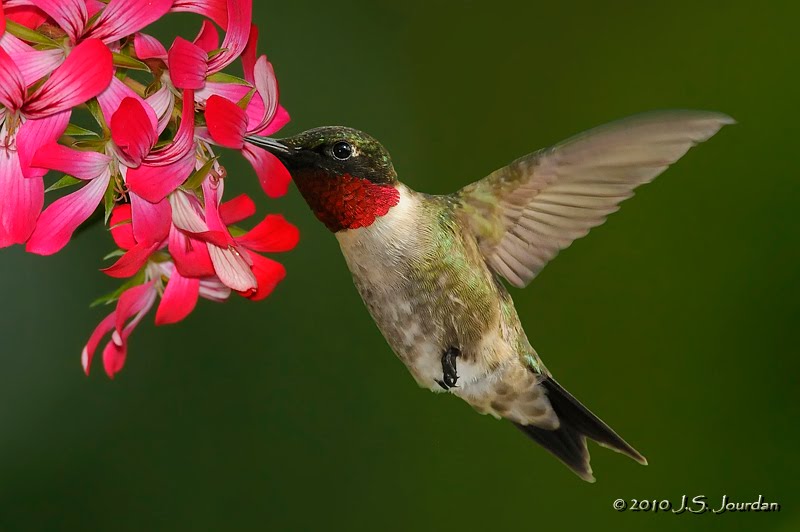
Pat Grogan Shelldrake Nature Sanctuary
Chippewa County
Located about six miles northwest off Paradise of Vermillion Road, this sanctuary is home to numerous plant species, including pink moccasin flower, pitcher plants, small cranberry and sundew.
A lucky visitor can also see sandhill cranes, gray jays, pine martins and American bittern.
Ancient lake levels created this beach bar, providing a narrow spit of pine-covered sand for the trail.

Northern Lower Peninsula
Julius C. and Marie Moran Peter Memorial Nature Sanctuary
Alpena County
The Peter Memorial Nature Sanctuary is wild and remote. Those who walk on the old path to Grass Lake encounter many interesting plants, such as purple flowering raspberry, buffalo berry, columbine and spurred gentians. In early June, the dwarf lake iris grows four to six inches tall, while the bird's eye primrose flowers bloom beautifully. Both prefer this sanctuary's alkaline soil.
The Grass Lake edge fluctuates from year to year and is home to sedges, pitcher plant, false asphodel, arrow grass and sweet gale. The open sections are ideal for bird watching, as the lakeshore is home to ducks, shorebirds, hawks and warblers.

Southeast Michigan
Sharon Zahrfeld Memorial Nature Sanctuary
Genesee County
Rolling hills and wetlands make it an attractive spot for songbirds. There is a nature trail that runs through the sanctuary, giving visitors spectacular views of the forest and creek.
The lower areas of the sanctuary are seasonally wet and include ephemeral ponds and Save It Creek. The sanctuary is in the Shiawassee River and then the Saginaw River. The southern half of the Shiawassee River basin, where the sanctuary is located, consists of alternating east-west fine or medium-textured ground moraines, till plains and outwash plains.
The seasonal variation of the creek's water level plays a vital role in this southern floodplain forest community, which is one of Michigan's most endangered habitats. The sanctuary's several wetlands make it an attractive spot for songbirds and other wildlife.
Skunk cabbage, scarlet oak and the Michigan lily are a few of the species that call Zahrfeld Memorial home. Spring visitors are greeted with a diverse wildflower display, including beautiful marsh marigolds.
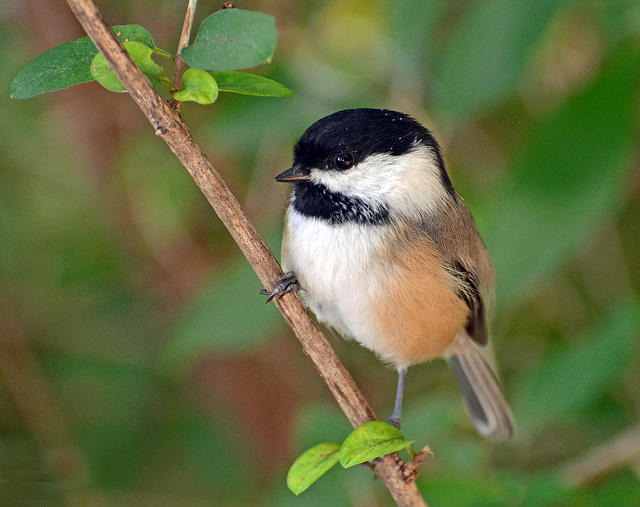
Elmer and Irene Jasper Woods Memorial Nature Sanctuary
St. Clair County
Red, white and painted trillium all occur in Jasper Woods, each blooming at slightly different times of the season and in different habitats. Red trillium is earliest and can be found in the forest's rich wet deciduous woods. It typically blooms in early May, depending upon spring weather conditions. White trillium begins to bloom a few days later and appears in drier woodlands, especially on the west side of the sand trail that ends at a private gate. Painted trillium appears latest, from mid- to late May.
Some of the sanctuary's early flowering plants include wood anemone, blue cohosh and saprophytes such as Indian pipes.
Jasper Woods is an excellent place for bird watching and provides habitat for many species of nesting birds, including the wood duck, rose-breasted grosbeak, ruby-throated hummingbird and black-throated green warbler.
Jasper Woods has a short trail, but visitors are free to explore the sanctuary at their leisure.

Goose Creek Grasslands Nature Sanctuary
Lenawee County
Over 200 plant species have been identified at Goose Creek Grasslands, including seven types that are classified as rare. Sedges and rushes are found among many fen plants, including buckbean and pitcher plant. Aquatic plants, such as pickerelweed and pondweeds, take advantage of the wet prairie, along with various types of goldenrods and asters. Adding color to the landscape are Goose Creek's dozens of prairie flowers, including culver's root, Indian paintbrush, sunflowers and Joe-Pye weed.
Goose Creek Grasslands is also an excellent location for bird watching. Sound carries well across the flat landscape, and visitors may hear the calls of sandhill cranes, yellow warblers and willow flycatchers. Hawks are regularly observed in the skies, with eastern meadowlarks, common yellowthroat and red-winged blackbirds below.

Anna Wilcox and Harold Warnes Memorial Nature Sanctuary
Macomb County
One mile of trail takes visitors through a forest that supports an array of trees and wildflowers. Massive tulip trees and bottle gentian highlight the diversity of vegetative species present within the sanctuary.
The clear stream that runs through the southern part of the forest is also home to inhabitants of the sanctuary; the brightly colored Laura's clubtail dragonfly is one of the species that relies on the high-quality water that the stream provides. The monkeyflower, which requires moist soil or even shallow water, also thrive in the marsh habitat.
Many wild turkeys and the occassional great horned owl are seen throughout the sanctuary. Visitors with a keen eye may be able to spot warblers and finches.
The abundance of large tulip trees highlights the incredible habitat and wildlife diversity of Wilcox Warnes Memorial Nature Sanctuary.

Timberland Swamp Nature Sanctuary
Oakland County
Timberland Swamp is the Michigan Nature Association's largest sanctuary in southeast Michigan.
Visitors can get a firsthand look at the hardwood swamp and second-growth hardwood forest on the two-mile loop trail. The path is often swampy and wet, so it is recommended to bring proper footwear and stay on the trail. Despite recent impacts to the understory due to a high deer population, numerous wildflowers, including trillium, maiden-hair fern and wild geranium are present. Acadian flycatcher, scarlet tanager and red-eyed vireo are found throughout the swamp in the spring and summer.
The habitats of swamp and forest provide an ideal environment for birds, mammals and amphibians. The great blue heron, great horned owls and several species of hawks call the canopy of Timberland Swamp home.
With its diverse habitat and incredible beauty, visitors will get a true glimpse into the past when they visit Timberland Swamp.
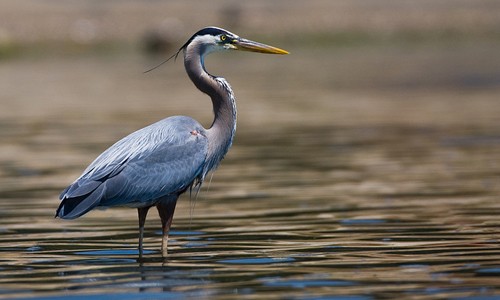
Southwest Michigan
Dowagiac Woods Nature Sanctuary
Cass County
The 384-acre Dowagiac Woods Nature Sanctury is considered a "crown jewel" of MNA's sanctuaries.
The easily navigable 1.5 mile loop trails allows visitors to observe all the sights and sounds Dowagiac Woods has to offer. The path is complete with boardwalks over seasonally wet areas, as well as benches for visitors to relax and take in the beauty.
The larger size of the property is essential in maintaining the diversity of plant and animal life found here. A mixed matrix of floodplain, southern-mesic forest and hardwood swamp allows for nearly 50 species of nesting birds and several reptiles, such as the black rat snake. Along with nesting birds like the barred owl and yellow-throated warbler, neo-tropical migrants use the river and forest habitat.
Spring in Dowagiac Woods offers an incredible wildflower display. More than 50 species of wildflowers carpet the forest floor, including the blue-eyed Mary, trillium and dutchman's breeches.
Both first-time guests and regular visitors to Dowagiac Woods will continue to find new discoveries in its impressive diversity.

Lawrence and Mary Bell Wade Memorial Nature Sanctuary
Allegan County
Wade Memorial is a fine example of mesic-northern compound mix of deciduous trees with scattered hemlocks. The trails are flat and easy to navigate, consisting of a bisected rectangular loop, creating two square-shaped trails that total about one mile. The sanctuary is well-suited to the study of both terrestrial and aquatic plants. Flowering dogwood and trillium can be found in the wooded areas during the spring, while pickerelweed and bur-reed inhabit the shore and lake.
Waterfowl and other birds are a common sight throughout the sanctuary. Wood ducks, hawks, owls and woodpeckers all inhabit the canopy and shoreline of Wade Memorial. Along with birds, various species of frogs and turtles call the sanctuary home. Visitors are welcomed by an assortment of plant life, including skunk cabbage, marsh marigold, jack-in-the-pulpit, hepatica, blue flag iris, trailing arbutus and dogwood, among others.
The beautiful lake views and varied plant life make Wade Memorial a destination for visitors looking to experience nature.
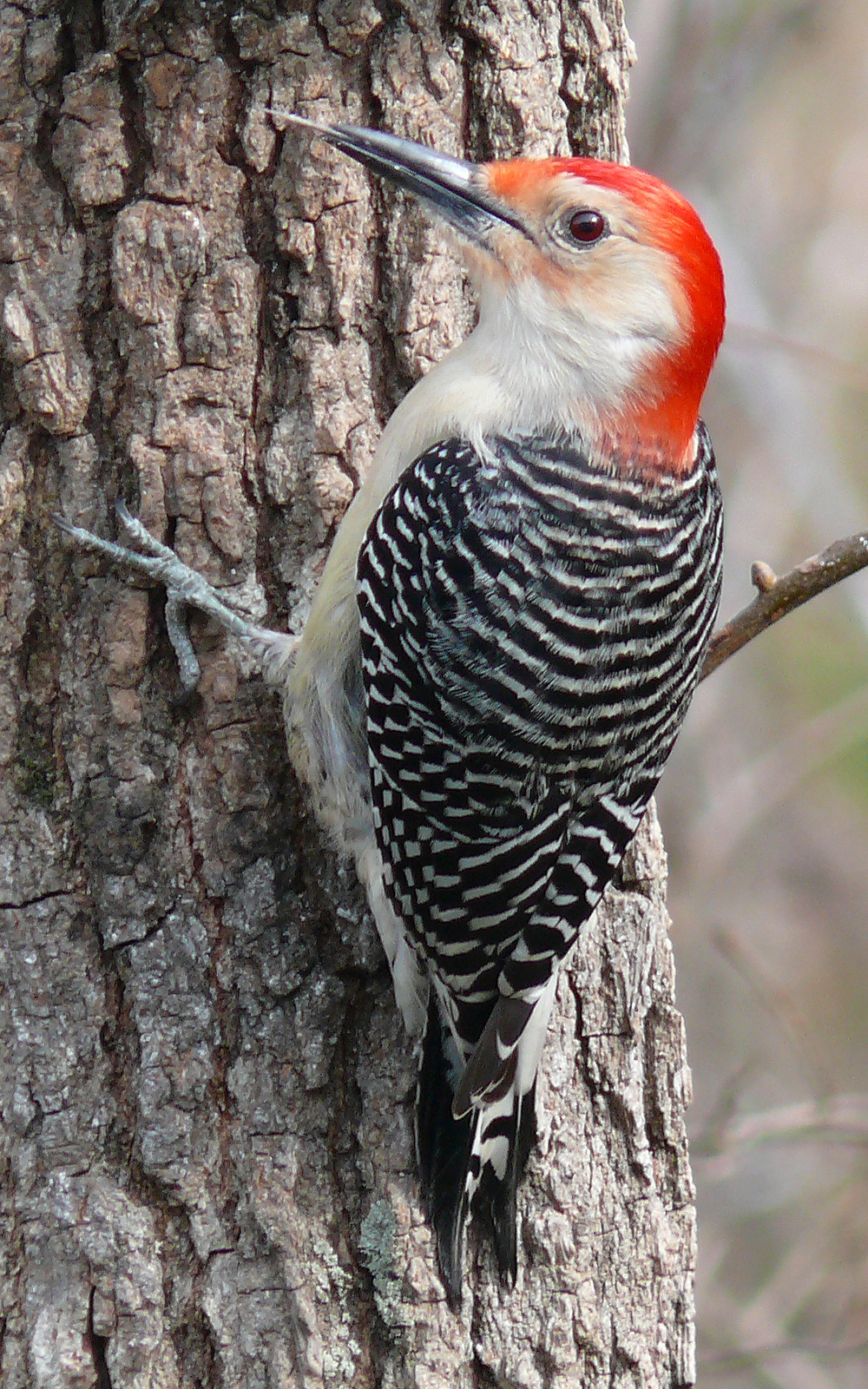
Newaygo Prairie Nature Sanctuary
Newaygo County
Prairies are one of the most endangered habitats in the state because many owners converted open acres to farmland in the 19th and 20th centuries.
Despite its size, Newaygo Prairie has no trails. However, the open landscape makes it easy for visitors to navigate and explore.
More than 100 prairie species survive here, including the porcupine grass, June grass and Fall Witch grass. Prairie ragwort, rock spikemoss, goat's rue, sand cherry and prickly-pear cactus also contribute to the variety of plants.
Several species of birds rely on the open habitat for Newaygo Prairie for nesting and foraging. Bluebirds and grasshopper sparrows nest in the open areas of the prairie, while eastern towhees prefer the shaded areas near the wooded edges.

White Pigeon River Nature Sanctuary
St. Joseph County
Located just three miles southwest of White Pigeon off Burke Road, White Pigeon River is a great place to go for a quick walk and spend all day. The sanctuary is home to more than 50 species of birds, snapping turtles, lizard's tail, huge clumps of silver maple, greend dragon, wild cucumber and moonseed. The sanctuary contains floodplain forest with dry upland forest.
